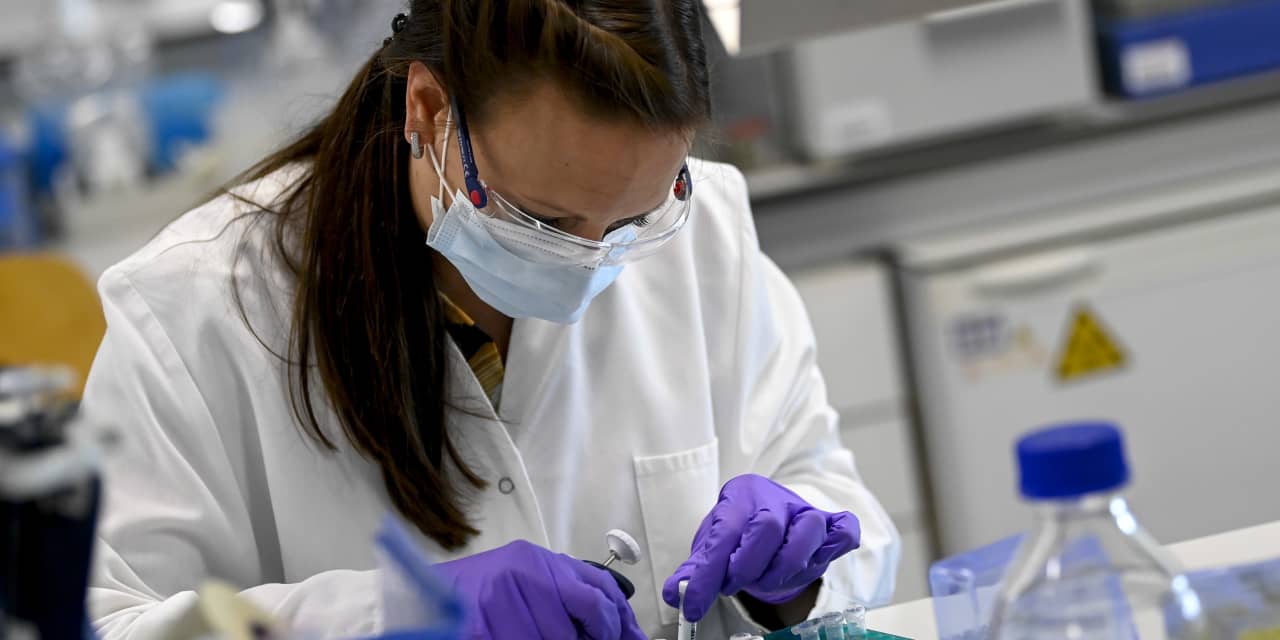Shares of
Johnson & Johnson
approached a 52-week low Tuesday, just over a week after the drugmaker reported better than expected third-quarter financial results and raised its forecast for full-year earnings.
The stock has now fallen 14% this year, while the S&P 500 has climbed 10%.
Johnson & Johnson
(ticker: JNJ) has entirely given up the gains it clocked in the first half of the year, when shares climbed from $150.11 in late March to $174.01 in late August.
Tuesday, the stock traded as low as $150.13, partly because of issues specific to the company. The sprawling litigation over its talc products, in particular, took a turn for the worse in late July.
Still, much of the drop likely stems from a broader malaise that’s afflicted pharmaceutical and medical device stocks this year. More than one malady has struck the healthcare sector, and there’s no panacea in sight.
Johnson & Johnson, which derives about two-thirds of revenue from its pharmaceuticals division and the remaining third from its medical devices business, sits at the intersection of two of the year’s bearish healthcare trends. One is investors’ wariness of all big pharma stocks outside of obesity drugmakers
Eli Lilly
(LLY) and
Novo Nordisk
(NVO). The other is investor fears that Lilly and Novo’s new obesity drugs will demolish the medical device industry.
Johnson & Johnson isn’t the only large-cap biopharma company trading near 52-week lows.
Pfizer
(PFE) set a new 52-week low of $30.42 on Tuesday,
Moderna
(MRNA) set one on Monday, and
Bristol-Myers Squibb
(BMY) set one on October 9.
Each company has its own problems, including
Pfizer’s
approaching patent cliff and
Moderna’s
declining Covid-19 vaccine revenue. But weighing on all the stocks are worries about the impact of the new Medicare drug price negotiation program, and a Federal Trade Commission that is highly skeptical of pharmaceutical mergers.
“Valuations are below historical averages and in line with where the group has tended to trade in terms of discount relative to the broader market during periods of healthcare policy-related uncertainties,” Goldman Sachs analyst Chris Shibutani wrote in an October 18 note.
The higher dividends that made the sector attractive in 2022, meanwhile, no longer serve as an inducement to investors. Merck pays a dividend yield of 2.8%, which is hardly attractive to yield-seeking investors in the current environment.
None of these worries have been enough to dampen investor enthusiasm for Lilly and Novo, which are up 60% and 43% this year, respectively. For the rest of the big drug stocks, though, it’s been a grim 2023. The
NYSE Arca Pharmaceutical index
is up 2%, while the S&P 500 Pharmaceuticals industry group is down 3.4%.
At the same time, Johnson & Johnson’s medical device division is also facing the same pressures that have weighed on shares of medical device companies such as
Abbott Laboratories
(ABT) and
Medtronic
(MDT). Abbott and
Medtronic
both clocked new 52-week lows on October 12. Shares of those companies, and others in the medical device sector, have fallen amid fears that the new obesity drugs will eat away at sales of devices meant to treat diabetes and other conditions. Barron’s has argued that those worries are overblown, and in an interview with Barron’s earlier this month, Johnson & Johnson CFO Joe Wolk said that the new drugs could actually grow the market for some procedures.
“There’s a number of procedures that people who are obese today are not candidates for,” including knee and hip replacements, and the new obesity drugs might make more people eligible, Wolk said. “It remains to be seen, it’s early days.”
So far, investors don’t seem to be reassured by Wolk, or by similar comments from Abbott CEO Robert Ford.
The pressures on pharma and medtech are complex, and unlikely to resolve soon. For Johnson & Johnson, though, some relief could come if the company is able to settle its talc lawsuits. Whether and when that will happen remains to be seen.
Write to Josh Nathan-Kazis at [email protected]
Read the full article here












